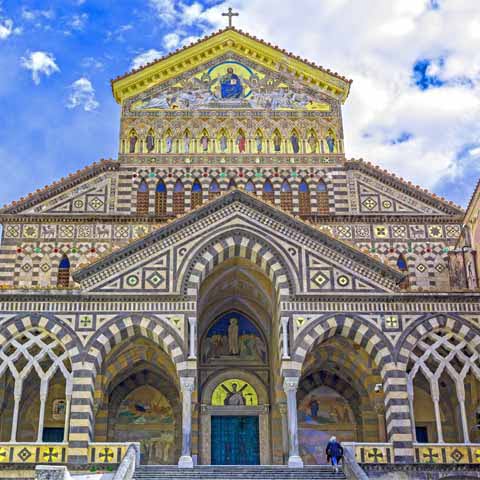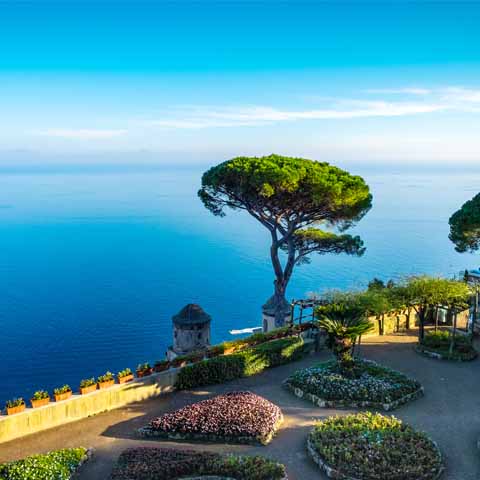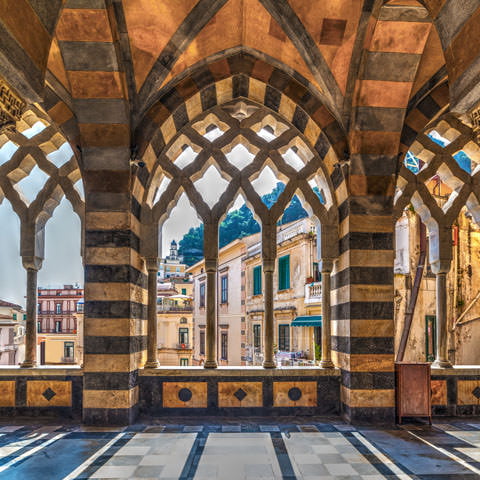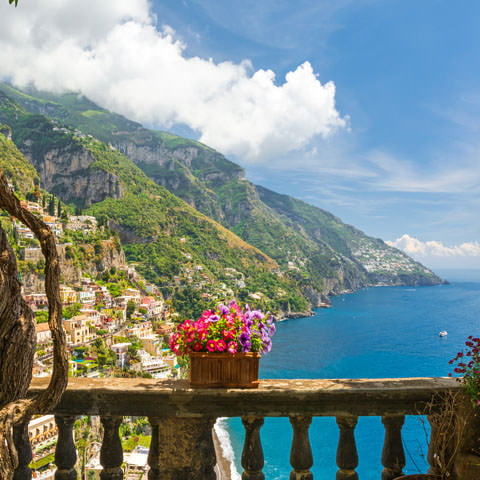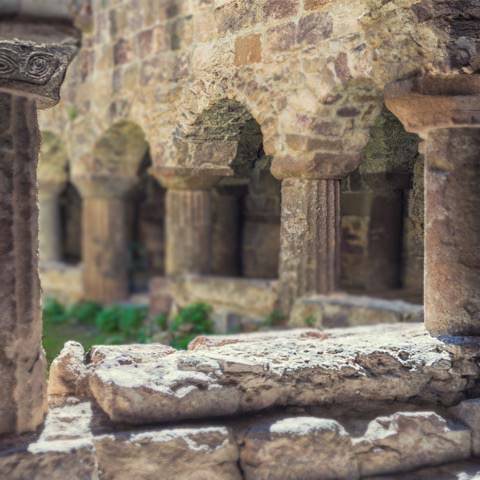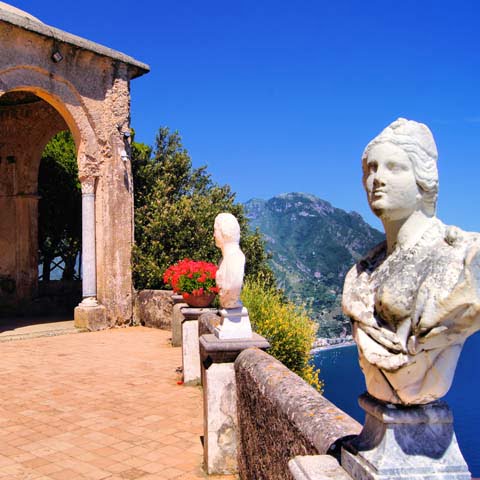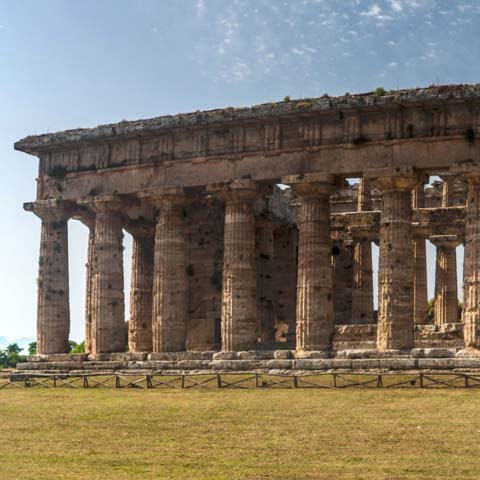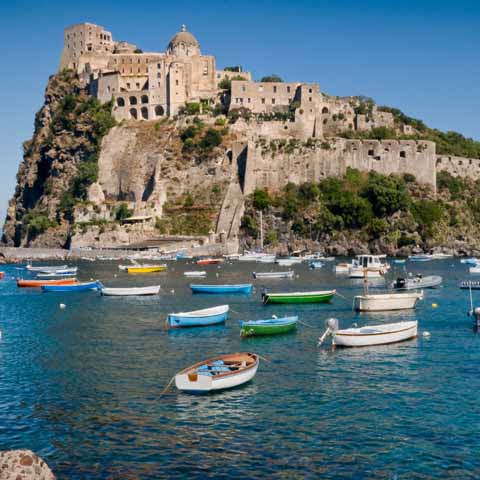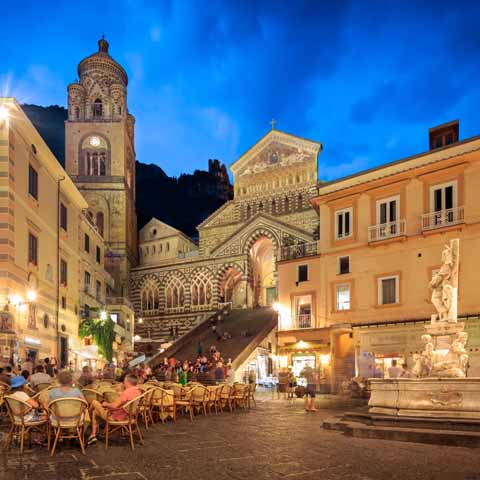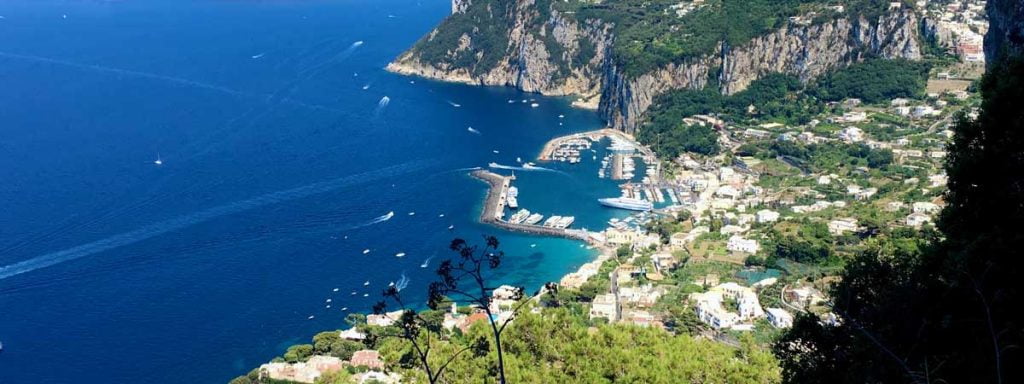The Amalfi Coast is widely considered to be one of the most beautiful stretches of shoreline in Southwestern Italy. With the blue waters of the Tyrrhenian and Mediterranean Seas contrasting against the brightly colored homes and buildings at the base of craggy mountains, its picturesque scenery is enchanting and makes it a premier vacation destination in Italy.
While the Amalfi Coast is thought to have maintained much of its beauty throughout the years and even to have worked in the cities’ favor as a seaport trading post and eventually a popular vacation destination in Italy, the earliest history of the land is still somewhat uncertain and frequently punctuated by popular legends and folklore.
Although the Amalfi Coast as it stands today consists of thirteen villages such as Atrani, Minori, Cetara, and more, the coastal cities of Amalfi, Positano, and Ravello are in many ways the focal points of history for this area.
PREHISTORY OF AMALFI COAST
The Amalfi Coast city of Positano is thought to have origins that can be traced back to the Paleolithic Age. Popular local legends claim that Positano came to be thanks to the gods of Greek mythology. It is said that Poseidon, the Greek god of the sea, created the city out of his immense love for a nymph named Pasitea. After its initial settlers, historians agree that the Romans were largely responsible for constructing the city’s infrastructure during the first century BC.
Although it is thought to have been around at least as early as the fourth century, the first known written documentation of the existence of the city of Amalfi can be traced back to the end of the sixth century buried in a letter by Pope Gregory I.
Another one of the more prominent cities in the Amalfi Coast’s early history is that of Ravello. The city is estimated to have been established in the fifth or sixth century toward the end of the rule of the Roman Empire.
HISTORY OF AMALFI COAST
During the Middle Ages, the cities of Amalfi, Positano, and Ravello began to flourish, making the area one of the busiest trading ports in the Mediterranean, with boats arriving from all over the world.
In the early ninth century, Amalfi declared itself a Maritime Republic and grew to great prestige as one of the primary anchor cities of the Amalfi Coast. Amalfi’s independence officially ended with the Norman domination in the late eleventh century, yet the area continued to thrive as an economic and cultural hub.
During this period of growth, it is thought that Amalfi sailors were the first to utilize a compass for boating and navigational purposes. In the thirteenth century, the city of Amalfi created a new chief export by producing paper at a time when it was one of the only places in Europe to do so.
Unfortunately, the dawn of the fourteenth century brought great destruction with the arrival of the plague and violent flooding. In many ways, these events contributed to the city’s fall from power as the Kingdom of Naples grew and became the leading regional powerhouse in the area.
The town of Ravello is located roughly a twenty-minute drive from Amalfi and experienced much of the same historical patterns and events. With Amalfi’s great surge to power early on and the city’s close proximity to it, Ravello became a part of the Republic of Amalfi in the ninth century. Roughly two centuries later, Pope Victor III made Ravello the seat of a diocese that attracted many aristocrats who eventually settled in the city. By the twelfth century, Ravello is estimated to have had almost twenty-five thousand residents, with many nobles among them. However, an attack by the Republic of Pisa later that century initiated a downturn in the economy for the entire Republic of Amalfi, and much of the population then moved to Naples and the surrounding area.
The city of Positano’s history during the Middle Ages mirrored that of Amalfi in many ways due to proximity of the cities and their alliance in the Republic of Amalfi. Positano, like the majority of the towns on the coast, created an advance warning system of manned watchtowers in response to increasing pirate raids. At the first sign of an enemy’s approach, fire would alight the top of the towers as a visible sign of an imminent threat, urging the inhabitants to seek refuge.
RENAISSANCE TO MODERN DAY HISTORY
In the late fifteenth century and just beyond, the city of Positano suffered from a triple threat of the plague, flooding, and famine. Though the city did become a busy seaport trading post for a time, the late nineteenth century brought more hard times with it and much of the population chose to emigrate elsewhere.
The city of Ravello lost some of its luster in the seventeenth century with the arrival of the plague. The city also was no longer the seat of the diocese. Eventually, Ravello recovered from the plague and enjoyed its status as a seaport with Amalfi for a time. Notably, the city was used as a harbor of safety by the King of Italy when he lived in Ravello for a short time during World War II.
Following the plague and flooding in Amalfi, military and trading activities decreased, causing the city to fall further from its original powerhouse status. But beginning in the nineteenth century, when King Ferdinand II, the Bourbon King of Naples, commissioned a road to be built to connect the main cities and villages of the coastline, Amalfi began to attract visitors.
The introduction of the road that connected the towns of the Amalfi Coast together was key to growing the area’s tourism and economy, since prior to its construction the area was accessible mainly by boat.
Today the Amalfi Coast serves as a top Italy vacation destination for travelers of all ages from every corner of the globe. Amalfi, Positano, and Ravello are some of the most visited places along the coast and are key to the area’s blossoming tourism.
An estimated five million people flock to the Amalfi Coast each year to enjoy the beautiful beaches, hike through the breathtaking landscape, shop at local boutiques, and simply savor a respite from the grind of everyday life.
ARCHEOLOGY NEAR THE AMALFI COAST
About an hour’s drive from the Amalfi Coast, travelers can visit the world-famous archeological site of Pompeii. During the eruption of Mount Vesuvius in 79 AD, the Ancient Roman city of Pompeii was destroyed. Remarkably, much of the city, including its buildings, artifacts, and even citizens were preserved for centuries under a layer of volcanic ash. Today, travelers have the unique opportunity to step back in time and visit the vast archeological site of Pompeii, walking down the ancient city streets and exploring the remaining houses and other Roman buildings.
If travelers have extra time and a keen interest in history, they may wish to visit other archeological ruins of the fateful Mount Vesuvius eruption such as Herculaneum, Oplontis, and Stabiae. In particular Herculnaeum, though smaller than Pompeii, is considered to be one of the most well-preserved archeological sites in the world.
South of the Amalfi Coast is the archeological site of Paestum, which was an important Greek city part of Magna Graecia (the Ancient Greek colonies of Southern Italy). This archeological site is best known for its three Greek temples that are remarkably well-preserved. In addition to the temples, this UNESCO World Heritage Site is home to ancient frescoes and artifacts including ceramics.
The Cities of Campania:
Don't just see Italy, live it.
Your dream trip to Italy has never been closer
No more endlessly scrolling travel sites. Our travel experts will craft the perfect, one-of-a-kind trip just for you.

300+
DESTINATIONS
We offer more Italian destinations than any travel site. Do and see more with Trips 2 Italy.
1 (of a kind)
ITINERARIES
Because your dream trip to Italy should be designed for you, not for the masses.
100%
PEACE OF MIND
From flights and accommodations, to food and activities - we take care of every detail.
